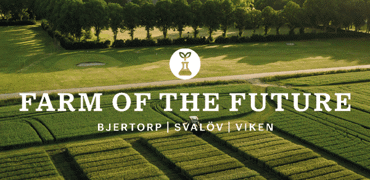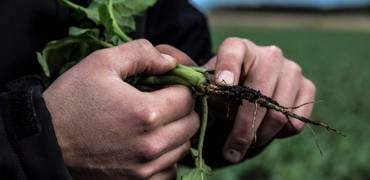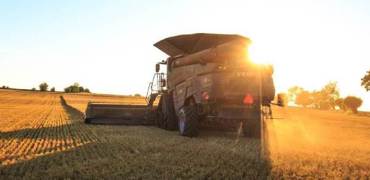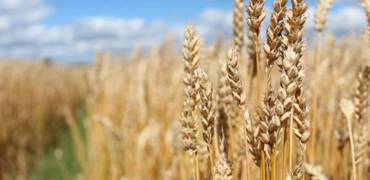How it works - what exactly is the difference between grain and seed?

Grain and seeds - how does it work? What's the difference? We got in touch with Maria Norén, Head of Seed business, at Lantmännen Agriculture to understand more.
GRAIN = a collective name for the harvested kernels from a number of different grains, such as wheat, barley or oats. The majority of all grains are used for food or feed, but some are also used for the production of ethanol, for example.
SEED = the kernel of grains that are used for further cultivation, i.e. for sowing. When you think of different varieties of seed, you might think that they are a bit like different apple varieties, they have slightly different traits and can be used for different end products.
![]()
Many Swedish farmers want a lot of autumn seed as it is sown in the ground almost a year before it is to be harvested and then has more time to grow, which is usually a little safer to give a good yield, but you need to vary. By having a crop rotation between spring and autumn seed when sowing, you distribute risks and try to optimize your crops. Because you only have one chance to do so, it's a fundamental factor for a good harvest.
200 kg of seed
That's how much seed is required to sow 1 hectare (10,000 sq m) of a grain crop.
About 100 thousand tons
Lantmännen produces this amount of seed annually. Spring seed is sown in the ground in the spring and autumn seed is sown in the autumn – but everything is harvested around the same time in July-September in the north hemisphere.
1960s
Since then, seed has been regulated by law in Sweden. Since seed is the basis for all further cultivation, it is considered important that the production and sale of seed is regulated. As a result of Sweden's EU membership, we also comply with EU legislation for seeds.
Seed legislation – what does it mean in brief?
- The law guarantees the purchaser of seed to receive healthy seed of a variety with known characteristics. In order to be on a so-called plant catalogue of varieties that may be sold, a new variety must be tested and approved, it must in some respect be better than existing varieties.
- The quality of the seed is regulated and must, for example, meet requirements that the seeds are of the right species and that they are of such a nature that they will germinate.
- Sufficient food must also be produced with good quality from the point of view of supply, and then there must be seeds of varieties that lead to these goals.
- The law also regulates where/how the seed may be grown. All fields that are to be used for seed must be field inspected, which means that authorized personnel visit and inspect the field and check that it is the specified variety that is present in the field. The field must be sown with the right seed and there are also requirements for what has been grown in the field in the years before.
- Growers should not unintentionally spread diseases or suffer financial loss due to seed diseases.
- If all the requirements of the legislation are met, the producer may certify the seed, and the law only allows the sale of seed that has been certified. Seed that is not certified may only be used for the farmer's own use, i.e. on the farmer's own farm.
Maria Norén, Head of Seed business, Lantmännen Agriculture
Number of years at Lantmännen: I started in 2012 and worked with grain. Since 2015 I have been working with seeds, for which I am now responsible for our total business.
Background: I have a Master of Science in Engineering and actually started as a management consultant. But I was born on a farm, so I knew about Lantmännen and had a summer job at a grain facility while I was studying. After a few years as a management consultant in the telecom industry, I felt that I wanted to get away from that environment. Do something else. I wanted to work more long-term.
Most enjoyable part of your job: Being an important part of the entire agricultural chain and also constantly facing new challenges. Even though I've been working for a long time, I always encounter something new as my areas of operation are largely affected by the weather and wind conditions. It is important to be flexible.
Favourite product from Lantmännen's range: I have to say something from our own plant breeding! It's extra fun when a variety that we have been developing for the past 10-15 years is introduced to the market. Since our products have long development cycles, it feels extremely satisfying.
Career tip: Personally, I don't set a lot of goals, I just do what I think is fun. When I feel that I am done, I want to try something new. Therefore, my advice is to have an open dialogue with your manager about what you want to do, and hopefully there will be an opportunity to do that within Lantmännen.
























